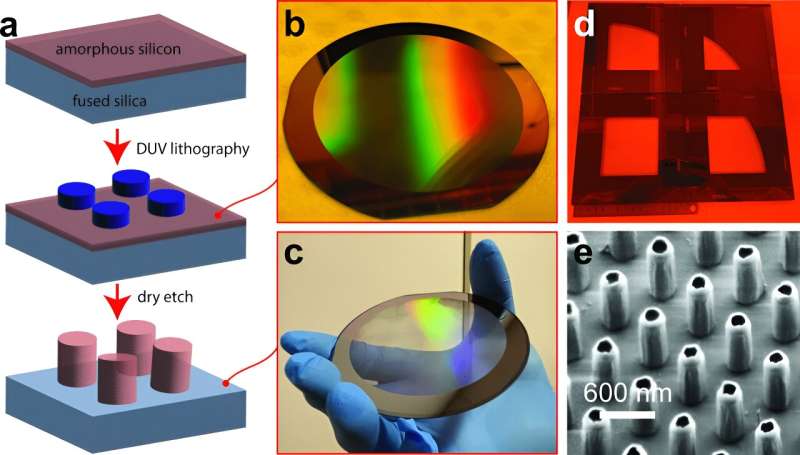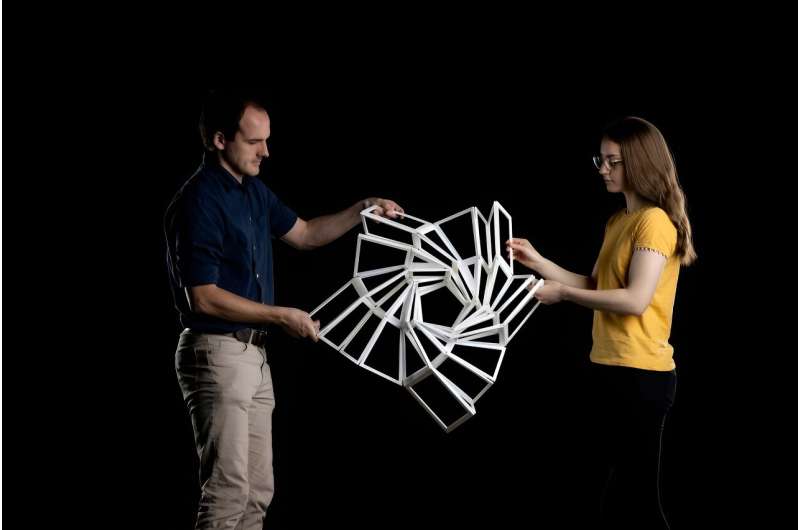"There are a lot of flavors of lidar right now," said Cheryl Gramling, assistant chief for technology at NASA's Goddard Space Flight Center in Greenbelt, Maryland. "It's such an important technology because of the precision and versatility that it offers."
Light detection and ranging, or lidar, is a remote sensing technology related to sonar and radar. Lidar uses pulses of light to measure distances and properties of objects accurately, by measuring the time it takes the light to reflect back to the lidar sensor.
Goddard innovators are looking to expand the usefulness of lidar applications in communication and navigation, planetary exploration, and space operations. Here are a few of the current investigations.
Foldable, flat lidar optics
Research engineer Mark Stephen is developing a deployable, segmented telescope to capture the returning light signal using state-of-the-art flat-panel optics organized in foldable, origami-inspired panels. Working with researchers at Brigham Young University, their team seeks to provide future missions with the benefits of lidar technology without the current technologies' high cost and limited efficiency.
Lidar typically is a high-cost technology that may not make the cut for tomorrow's smaller, lighter, and more efficient missions. Size, weight, and power demands limit the technology's ability to be implemented in more missions.
"Most people want really high performance," Stephen said, "But they want it in a small, light, and power-efficient package. We're trying to find the best balance, and cost matters. Often the cost comes more from the size, weight, and power than it does from the actual development if we're launching something into space. That is where it gets expensive."
Stephen is wrapping up a three-year effort to improve lidars through a Radical Innovation Initiative grant within Goddard's Internal Research and Development (IRAD) program. Their project has been picked up by NASA's Earth Science Technology Office to fund further improvements.
Typically, lidar receivers depend on bulky lenses to capture light, each lens needs a specific curvature and size to bend the light, in addition to the structures which hold the lenses, and other mechanics, Stephen said. Larger lenses are more effective, and that is where lidar technology tends to get heavy.
Flat optics use new types of nano-structured materials to manipulate individual photons, he said. These meta-materials allow thin and lightweight optics to perform the same functions as much larger and more expensive three-dimensional counterparts.

"We are working toward being able to have a family of instruments where we have some flexibility and agility to meet the needs of a given mission," Stephen said. "We want to develop a tool where you can make a better trade in terms of size, weight and power versus performance."
One laser, many wavelengths
Goddard engineer Guangning Yang is looking to improve lidar by producing multiple wavelengths of light from a single beam. Most modern lidars use multiple beams of a single wavelength to increase their accuracy.
Yang is the primary investigator for CASALS, or Concurrent Artificially intelligent Spectrometry and Adaptive Lidar System, a lidar technology that can sweep a large area more efficiently.
CASALS starts with one laser pulse, but instead of splitting that pulse into the many directions it needs to travel, their technology changes the wavelength of the laser at a very high speed. The different wavelengths of light then exit the laser transmitter at different angles based on their wavelength.
This pulse sequence produces a broom-like array sweeping across the object, landscape, or celestial body being studied.
"We have improved the efficiency," Yang said, "and that will allow us to reduce the instrument's size dramatically."
Along with improvements in efficiency, CASALS is smaller than a typical lidar instrument. Yang said CASALS could help provide higher-density mapping of Earth and of other planets and moons as well as assisting with autonomous descents and landings.
Both flat optics and wavelength scanning offer new possibilities for lidar technology and are part of an array of investigations expected to unlock new opportunities in science and navigating distant worlds, Gramling said.
Journal information:Nano Letters
Provided by NASA

